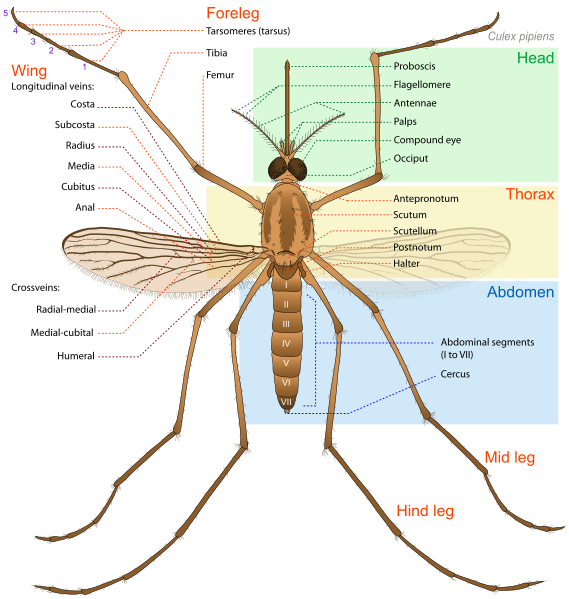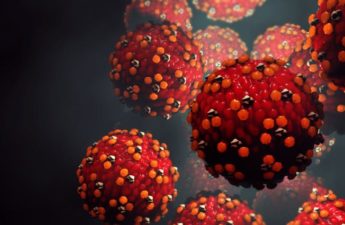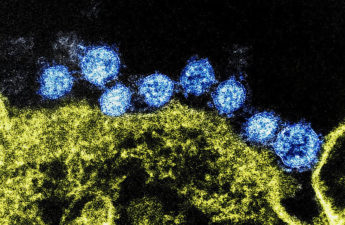
by Nada Hassanein
Stateline
Mosquito-borne illnesses are a growing concern in Northeastern states, with health officials monitoring cases and advising residents to avoid outdoor activities near standing water and other environments prone to mosquito spread.
Of particular concern is eastern equine encephalitis, a rare disease that can lead to serious and fatal illness, caused by mosquitoes carrying the virus.
Known as EEE or “triple E,” the virus can cause disease in humans and animals such as horses and birds. It doesn’t spread from human to human, but is transmitted through the bite of an infected mosquito.
While most people don’t develop symptoms or serious illness, 1 in 3 people who become seriously ill from the virus die, and about half of those who recover from severe cases will still experience long-term physical and cognitive effects, according to the federal Centers for Disease Control and Prevention. Symptoms can include fever, headache, vomiting and drowsiness. Encephalitis is a rare and serious complication in which the infection causes inflammation in the brain.
Eight states — Massachusetts, New Hampshire, New Jersey, New York, North Carolina, Rhode Island, Vermont and Wisconsin — have reported human cases of the virus this year, for a total of 16 cases, according to the latest CDC data. Other states have seen cases in animals only. In Maine this year, triple E was found in two emus and one wild bird.
Tuberculosis cases rise, but public health agencies say they lack the resources to keep up
In August, Massachusetts officials said they would begin spraying for mosquitoes in two counties after a man in his 80s contracted the virus, four years after the state last saw an outbreak that led to 17 confirmed cases and seven deaths.
Also in August, New Hampshire confirmed its first EEE death this year; it was the first infection the state had seen in a decade, according to state health officials. So far this year, the state has confirmed five total cases in humans, and the disease has been detected in one horse and seven mosquito batches. The state last saw infections in 2014, when three people were infected and two of them died.
Preventive steps
In recent weeks, New York confirmed its first case and death since 2015. The death in Ulster County, about 100 miles north of New York City, prompted Democratic Gov. Kathy Hochul to issue a declaration of imminent threat to public health, and to provide state resources to local health agencies to take preventive action, including mosquito spraying.
The state also is making insect repellent available at state parks and campgrounds; posting signs to raise awareness of EEE; consulting with local health officials about limiting park hours and camping availability during dawn and dusk, the hours of peak mosquito activity; and using social media to educate New Yorkers on how to avoid mosquito bites.
State officials said the person who died in Ulster County was an older adult, but wouldn’t share details as they investigate factors around the case.
Bryon Backenson, epidemiologist and director of the New York State Department of Health’s Bureau of Communicable Disease Control, said about a dozen counties throughout the state take part in mosquito surveillance, but rural Ulster County wasn’t one of them.
While the virus doesn’t spread from horses to humans, researchers keep track of EEE cases in horses to determine how prevalent the virus is in a particular area.
This year, there were 20 cases of EEE reported in horses across about a dozen New York counties. The state has never had so many cases, nor in so many counties, in a single year, Backenson said.
“Horses, in many ways, can act as sentinels for us,” Backenson said. “We can oftentimes use horses as an indication that triple E may be in a particular area at a particular time. If a horse tests positive, we know that there are mammal-biting mosquitoes that are out there and active.”
Ulster County did have a horse case that preceded the human case, but that horse wasn’t in close proximity to where the individual lived, Backenson noted.
As bird flu spreads on dairy farms, an ‘abysmal’ few workers are tested
Philip Armstrong, chief scientist at the Center for Vector Biology & Zoonotic Diseases at the Connecticut Agricultural Experiment Station, said while his state hasn’t seen cases, the regional clusters are cause for vigilance.
“This is definitely one of the more active years,” he said. “I would say, about every four or five years, we see these sort of regional outbreaks that occur.”
Armstrong said his team is still collecting and testing mosquitoes.
“So far, we are lucky in Connecticut in that we have not had a human case,” he said. “But sometimes these things come out of the woodwork later in the season — you just don’t know. I’m not ready to declare victory yet.”
Climate change’s impact
There is no human vaccine or medicine for triple E. Experts say residents can protect themselves by using insect repellent and wearing long sleeves and pants when going outside; avoiding the outdoors at dusk and dawn when mosquitoes are most active or taking extra precautions when outside at those times; and draining sources of standing water, such as bird baths and wheelbarrows, a prime environment for mosquito egg-laying.
Dr. Erin Staples, a physician and medical epidemiologist with the CDC’s Division of Vector-Borne Diseases in Fort Collins, Colorado, told Stateline the U.S. typically sees an average of seven cases annually. In 2019, the nation saw 38 cases — the highest number of cases ever reported in a year.
Climate change poses health risks. But it’s hard to fight when state policy ignores it.
Climate change can increase risk of vector-borne diseases, including those from mosquitoes, as increased rainfall and warmer temperatures create favorable conditions that can boost their populations.
While it’s not unusual to see sporadic infections of triple E or West Nile virus from year to year, Staples said, changes in bird and mosquito populations and weather patterns can affect the number of cases.
“Climate is one of many factors that can impact vector-borne diseases. Changes in climate lead to changes in the environment, which can change where and how often vector-borne diseases, like EEE and West Nile, occur,” Staples wrote in an email, noting that flooding can also change where cases are seen.
Sen Pei, an assistant professor of environmental health sciences at Columbia University’s Mailman School of Public Health, said along with rising temperatures that can cause expansion of mosquito habitats, climate change-related disasters such as hurricanes can alter how and where people live. Officials should monitor for vector-borne diseases after disasters.
“It’s a systematic impact. Vector-borne disease is such a complicated ecosystem,” he said.
Stateline is part of States Newsroom, a nonprofit news network supported by grants and a coalition of donors as a 501c(3) public charity. Stateline maintains editorial independence. Contact Editor Scott S. Greenberger for questions: info@stateline.org. Follow Stateline on Facebook and X.


